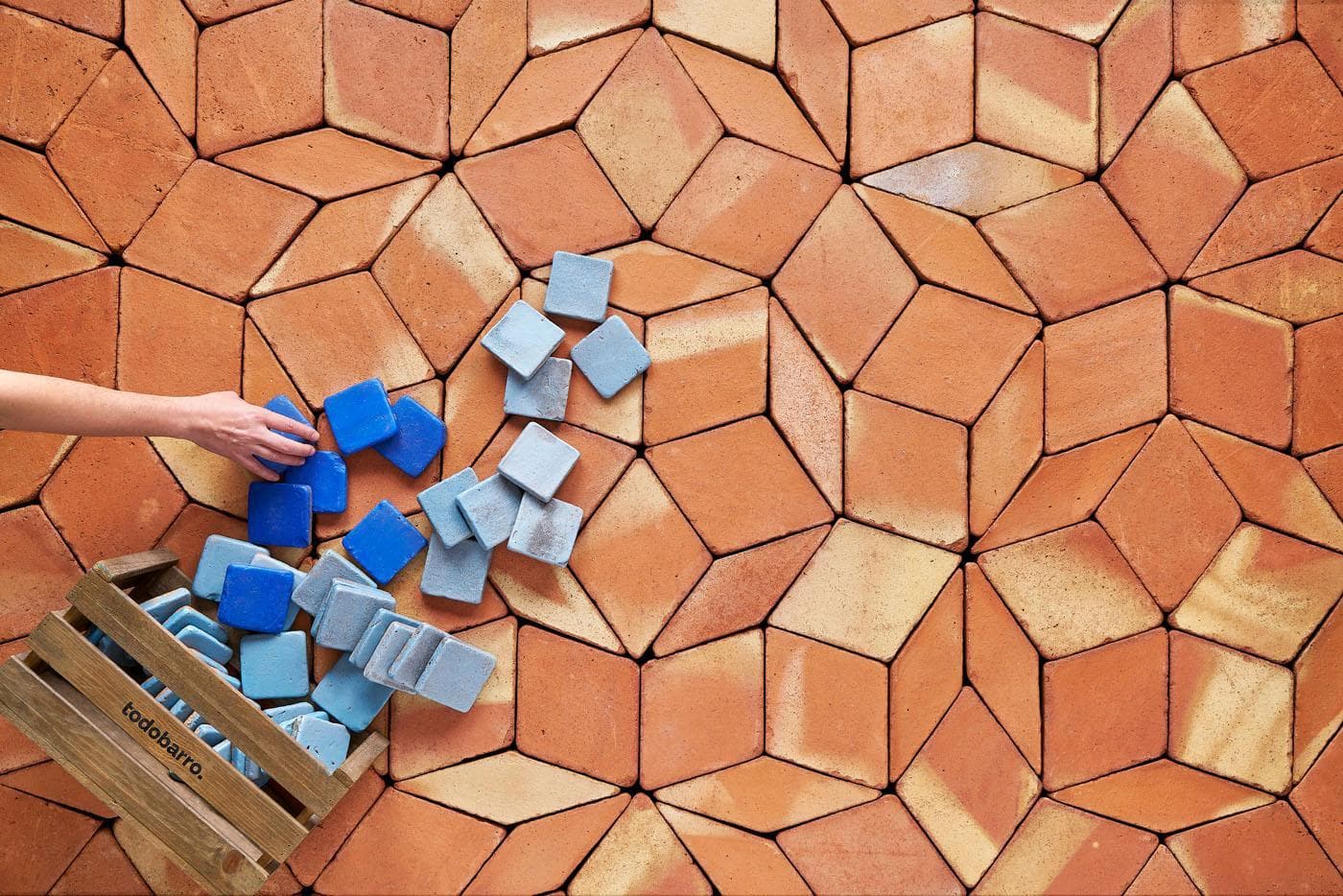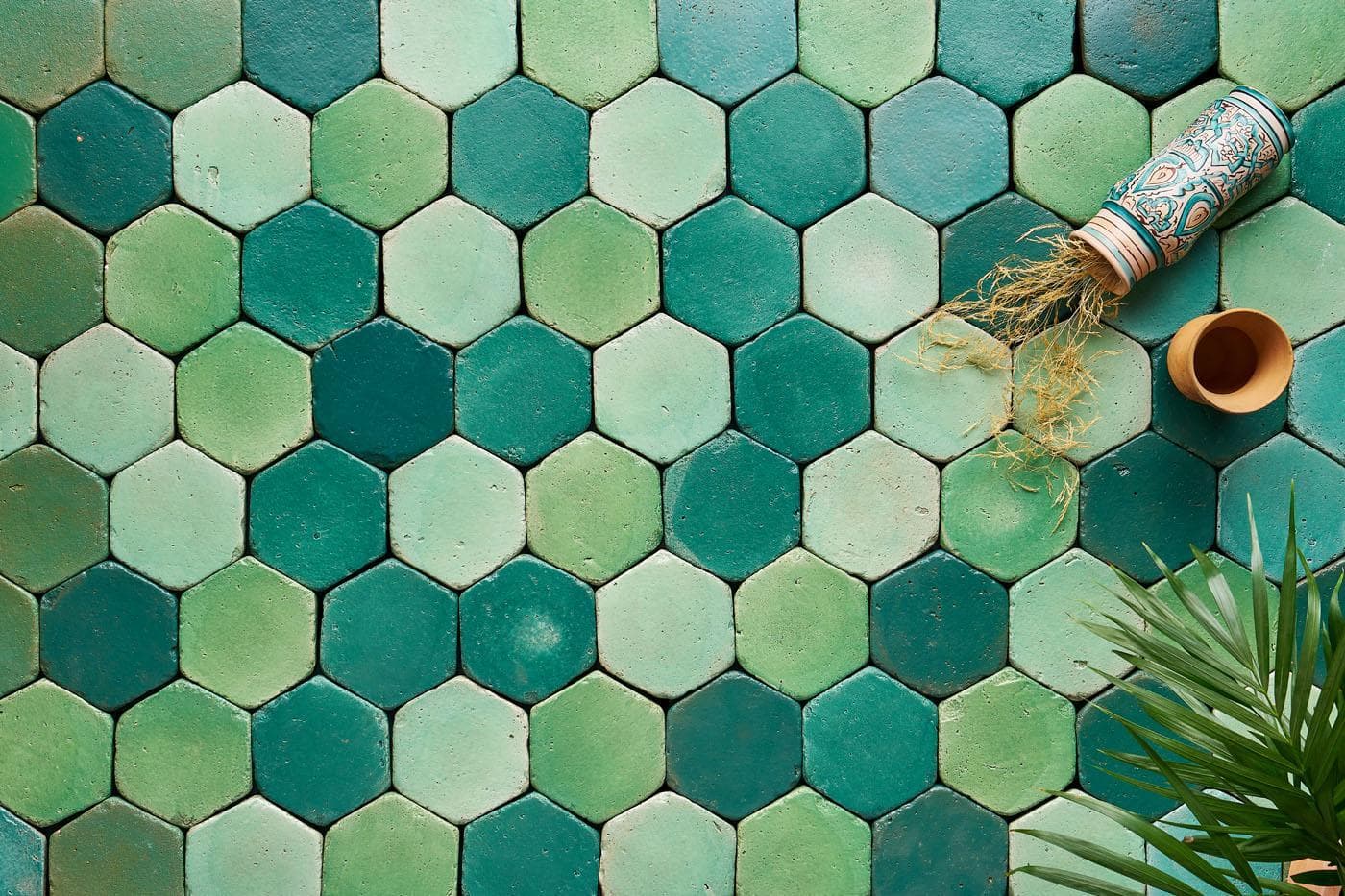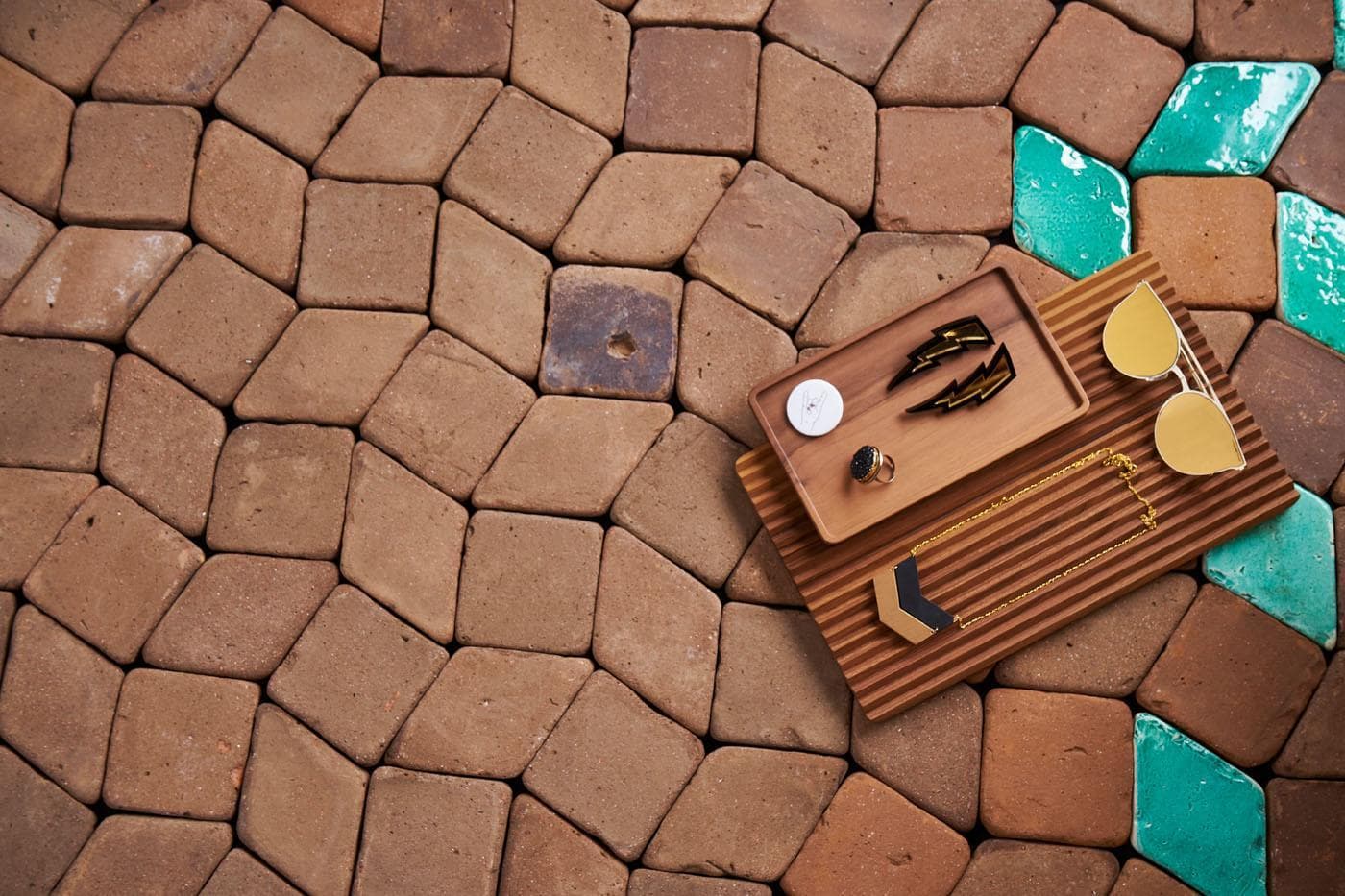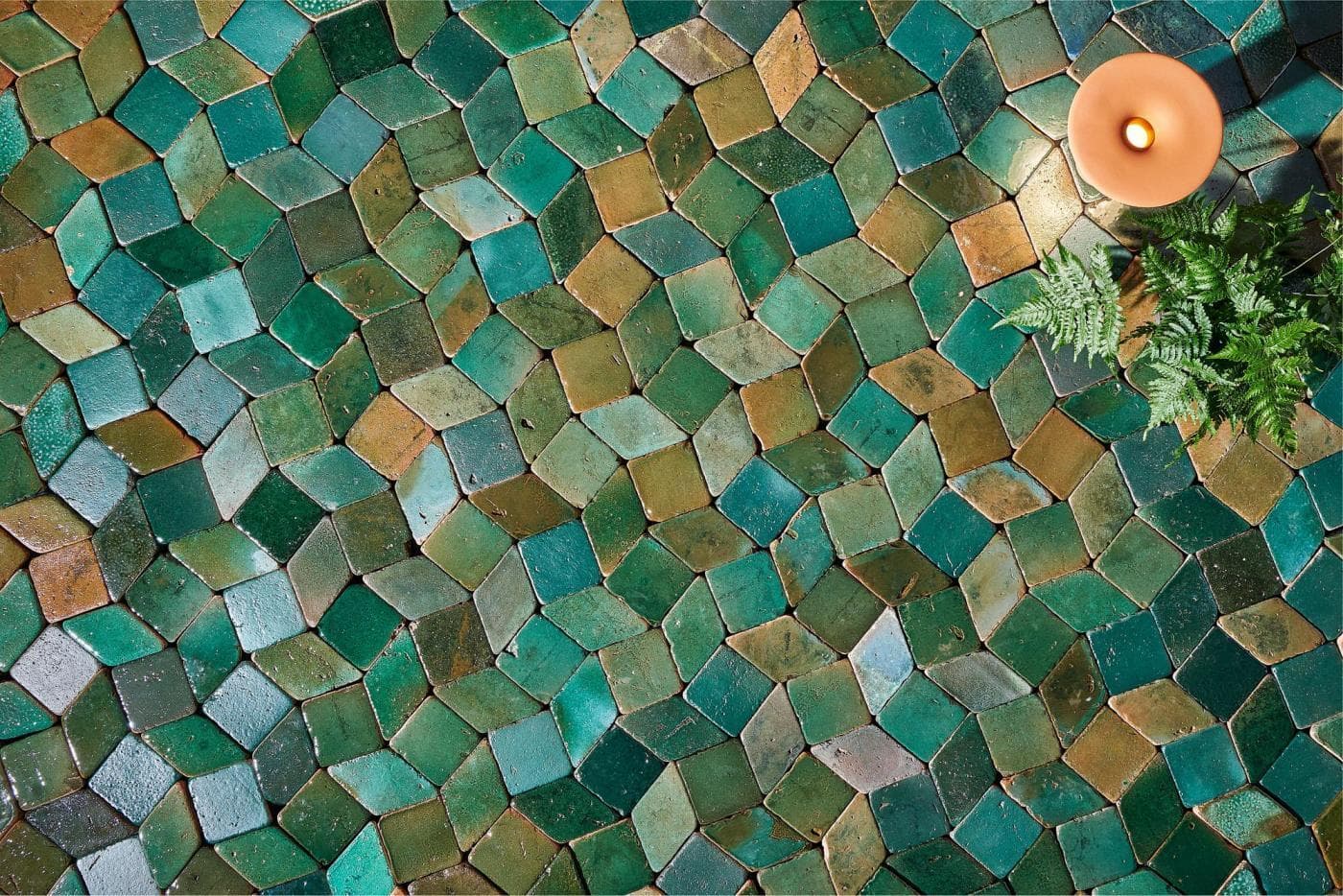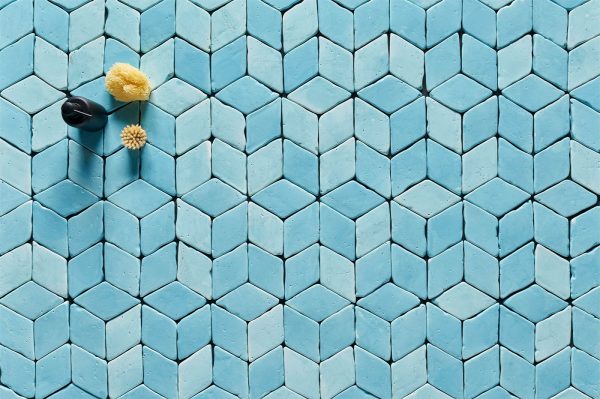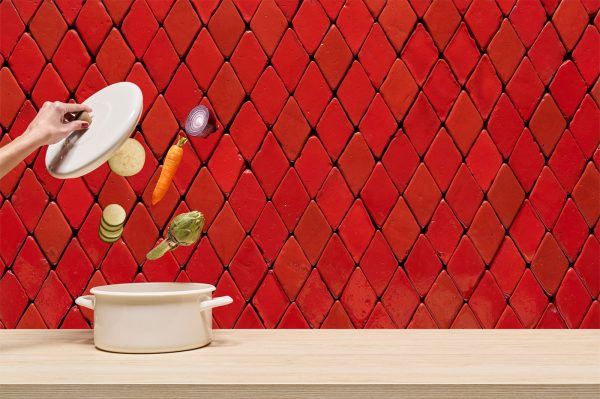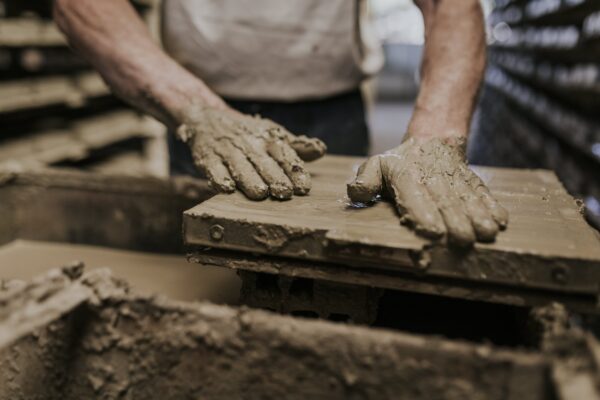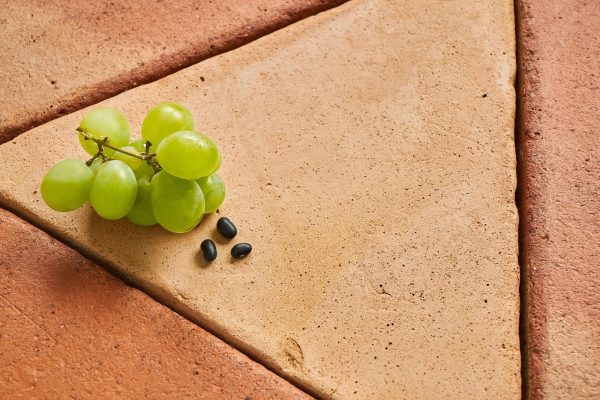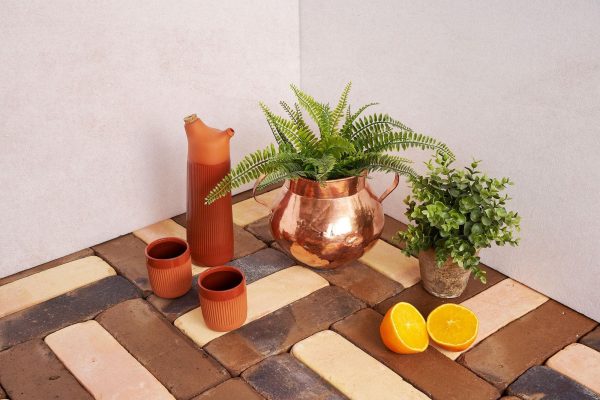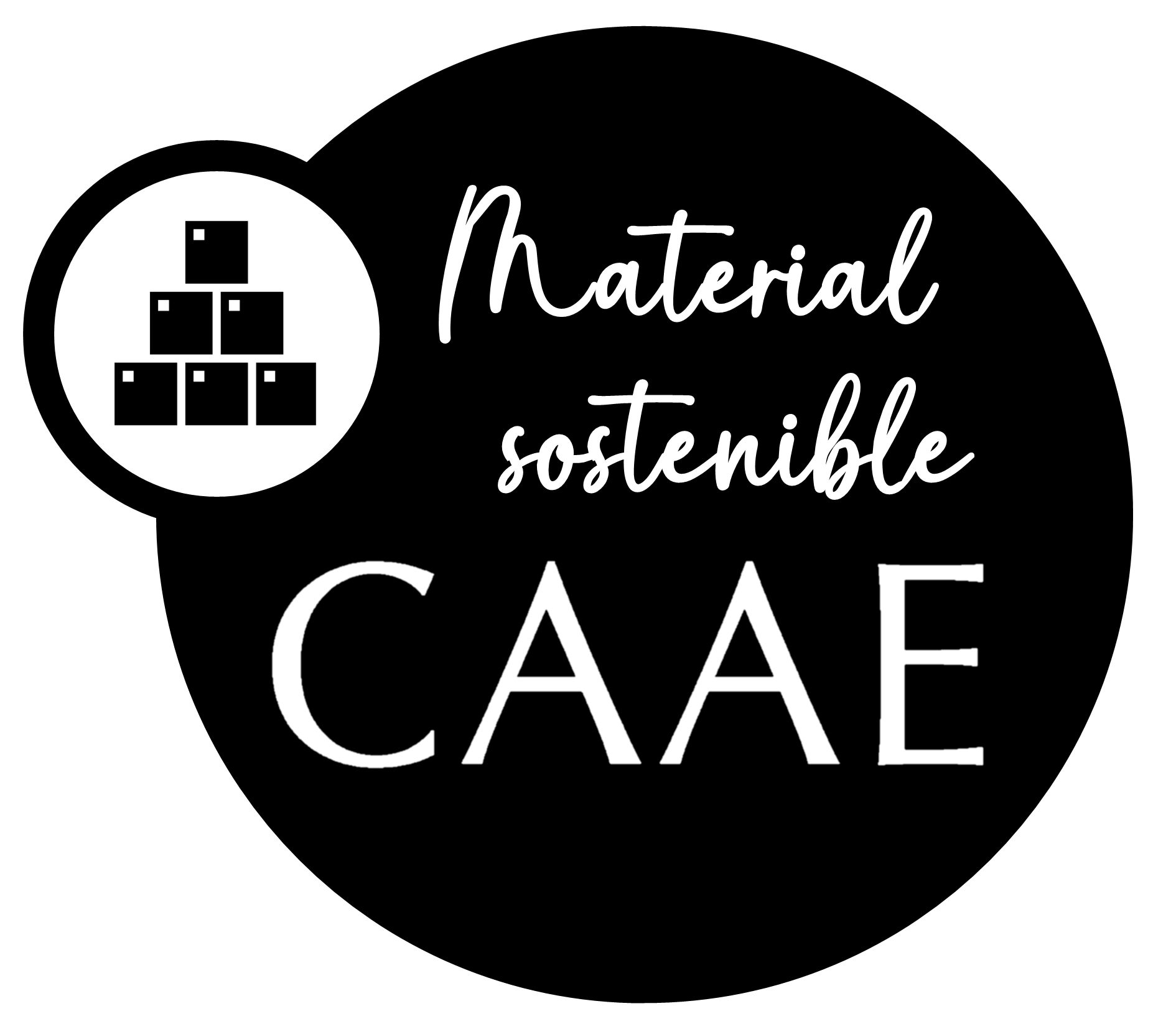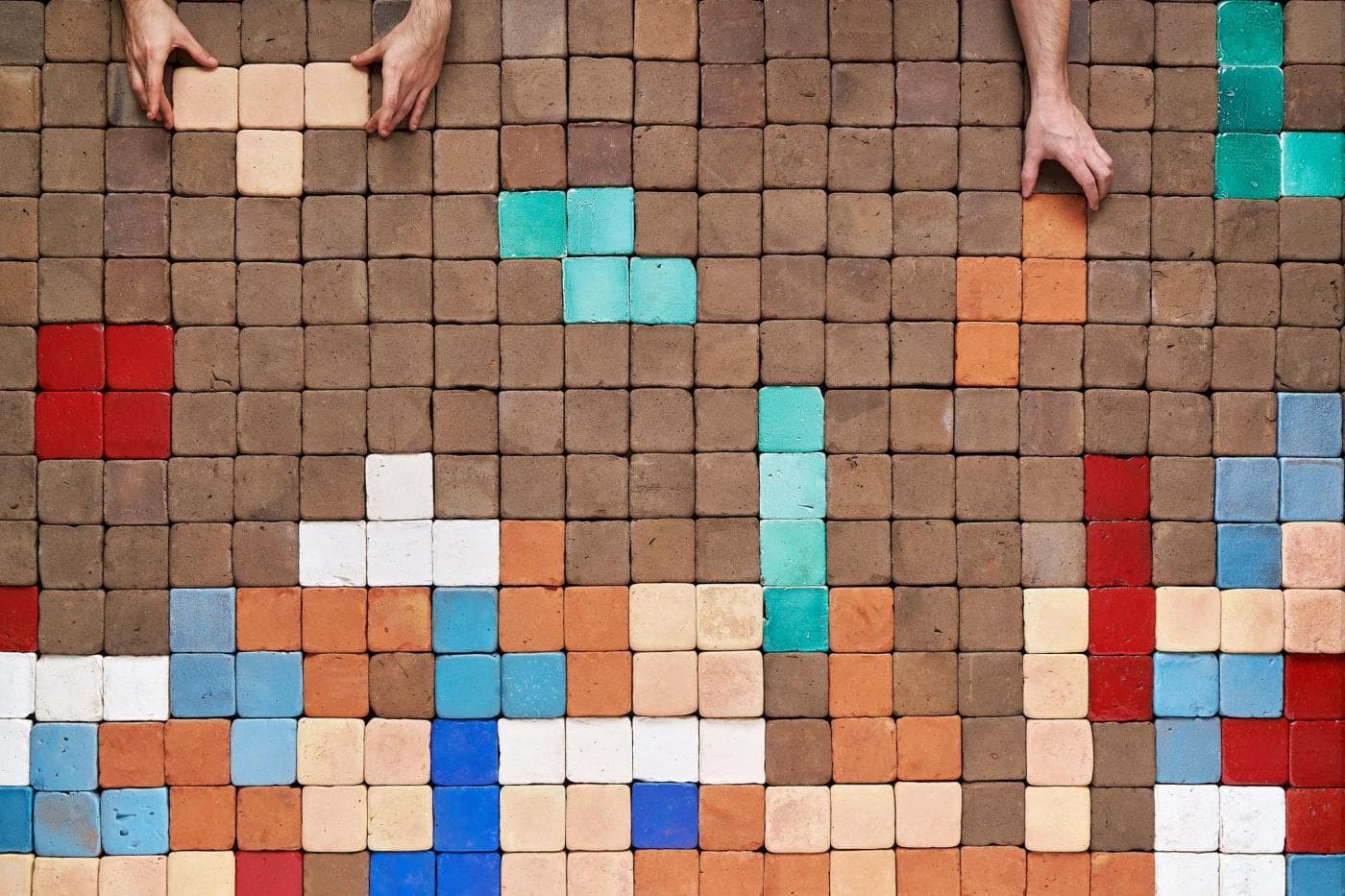
Glazed ceramic tiles
Our glazed ceramic tiles are made by hand using traditional techniques. They bring design and functionality together as one.
One of our objectives in the short term is to continue exploring and developing new tonalities which we can use to create striking and functional glazed ceramic tiles, based on original designs that are utterly unique.
Our current tonalities are Aguamarina, which features gorgeous tones of blue, Alhambra, in an eye-catching and intense red, and Zamarut, which is an exploration of different shades of green. We are planning to expand our catalog and, for that reason, we wanted to take a more in-depth look at the concept of the azulejo and share its technical characteristics with you.
A brief definition of the azulejo
Not long ago, we published an article on the history of the Andalusian azulejo, tracing its history from inception to the present day. And so, for that reason, we won’t expand too much more on the topic here. But what we do consider important to mention is that the term azulejo is a word which comes from Arabic, specifically from the expression al zulaycha, which means polished stone.
Polished or glazed clay is a traditional and millennia-old technique which has been in use since 1500 BC. It refers to a process whereby clay is fired and then covered with a powdered film which, when reintroduced to the fires of the oven, generates a compact mass after fusing to the surface of the ceramic.
The result is the glazed effect we see on the tiles. The surface is smooth and impermeable, which is why it is used not only by artisanal producers of terracotta floors such as ourselves, but also by master potters who use it to manufacture various kinds of kitchenware and ornaments.
The glaze not only improves the aesthetic appearance of the pieces, but also makes them easier to clean and considerably boosts their hygienic properties. Moreover, it considerably reduces deterioration and provides protection against corrosive substances or the passage of time itself.
Technical description of glazed ceramic tiles
These tiles, or azulejos, are created through the semi-dry pressing of clay and can be obtained through a number of different firing techniques:
- Single firing, which implies the application of glaze onto the raw piece so that both the glaze and the ceramic itself are fired together at the same time.
- Double firing, whereby the glaze is first applied only after the clay piece has undergone an initial firing. Once the glaze has been applied, generally in powdered form, the piece is then returned to the oven, and the glaze adheres to the ceramic.
- Triple firing, which is when the tile is fired for a third time after being first glazed and then decorated.
This technique makes it possible to attain a broad degree of tonal variation on either a glossy or matte finish. Incidentally, it is interesting to note that even despite the impermeability of the glazed side, in technical terms, these kinds of tiles possess a great capacity for water absorption (given that this variable is calculated on the basis of the supporting face and not the visible face).
The final result will depend largely on the tonality of the clay base, which can be either white, rust red, straw or slate in color. The exact production process will also exert an influence, as well as the formats used and the surface treatment that gets applied to the tile. In this way, azulejos display a greater degree of variation than any other kind of ceramic product.
Artisanal glazing methods for ceramic tiles
- Pouring or bath: the glaze is poured over the piece. This method is usually applied when the quantity of glaze is limited. It produces an uneven effect and is best suited for pieces which do not have very many nooks or grooves.
- Immersion: the pieces are submerged in the glaze. This allows the glaze to reach all parts of the piece regardless of the exact format.
- Brush glazing: this method uses less materials and allows for greater precision when combining different colors.
- Aerosol: this requires a skilled technique in order to obtain a good finish.
Usage of glazed ceramic tiles
Due to their impermeability and the fact they are easy to clean, azulejos are traditionally used in bathrooms and kitchens, although not exclusively. They are also used in outside locations such as patios and facades, and in other rooms as well.
In fact, it is even possible to create glazed sets which present great color variation, or to use these tiles in order to introduce shade and nuance in combination with weathered terracotta tiles, often to very interesting effect. What we can be sure of is that design trends will never cease to evolve, and so a product as versatile as the azulejo will always be able to find its natural place in any design project, no matter the exact style or aesthetic being deployed. There is no doubt that the azulejo is an inspiring element, capable of drawing out great creativity from just about any designer.
